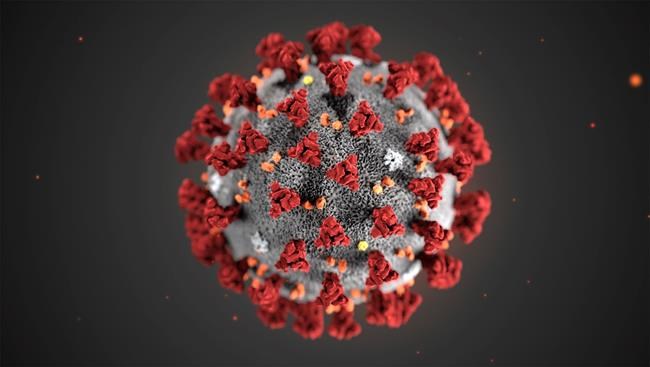Experts prepare but new China virus not a pandemic yet
Advertisement
Read this article for free:
or
Already have an account? Log in here »
To continue reading, please subscribe:
Monthly Digital Subscription
$0 for the first 4 weeks*
- Enjoy unlimited reading on winnipegfreepress.com
- Read the E-Edition, our digital replica newspaper
- Access News Break, our award-winning app
- Play interactive puzzles
*No charge for 4 weeks then price increases to the regular rate of $19.00 plus GST every four weeks. Offer available to new and qualified returning subscribers only. Cancel any time.
Monthly Digital Subscription
$4.75/week*
- Enjoy unlimited reading on winnipegfreepress.com
- Read the E-Edition, our digital replica newspaper
- Access News Break, our award-winning app
- Play interactive puzzles
*Billed as $19 plus GST every four weeks. Cancel any time.
To continue reading, please subscribe:
Add Free Press access to your Brandon Sun subscription for only an additional
$1 for the first 4 weeks*
*Your next subscription payment will increase by $1.00 and you will be charged $16.99 plus GST for four weeks. After four weeks, your payment will increase to $23.99 plus GST every four weeks.
Read unlimited articles for free today:
or
Already have an account? Log in here »
Hey there, time traveller!
This article was published 03/02/2020 (2139 days ago), so information in it may no longer be current.
Health authorities are preparing for a possible pandemic as they work to contain a respiratory illness in China that’s caused by a new virus. Governments are limiting travel, isolating sick people and keeping travellers returning from the affected region under quarantine to watch for symptoms.
In the United States, the scope and cost of the government response is increasing. U.S. health officials already have tapped into a $105 million rapid response fund and notified Congress that they may need $136 million more.
Here’s what you should know about the illness:

IS IT A PANDEMIC?
Not yet. The virus is an epidemic in China, where more than 17,000 cases have been reported, but has not affected enough people around the globe to be considered a pandemic. So far, other countries have reported only a few dozen cases, most involving travellers returning from China and their close contacts.
And while there have been more than 360 deaths, all but one has been in China.
Based on the way the virus spread in China, investigators believe each infection has led to an average of 2.2 others getting sick. That’s a bit more than ordinary flu but less than SARS, severe acute respiratory syndrome, a genetic cousin of the new virus.
Governments are preparing for a possible pandemic and taking actions to prevent one.
The World Health Organization designates a pandemic when there are outbreaks on at least two continents. So far, WHO has called this a “public health emergency of international concern.”
The 2009 H1N1 influenza virus reached pandemic level. Now, H1N1 is a regular flu virus that circulates around the globe seasonally.
WHAT IS THE NEW VIRUS?
Scientists have identified it as a new coronavirus. The name comes from the Latin word for crowns or halos, which coronaviruses resemble under a microscope. The coronavirus family has many types that affect people. Some cause the common cold while others originating in bats, camels and other animals have evolved into more severe illnesses such as SARS or MERS, Middle East respiratory syndrome.
WHERE DID IT COME FROM?
The first cases appeared in December in Wuhan, a city in central China’s Hubei province. Many of the first people infected had visited or worked at the Huanan Seafood Wholesale Market in Wuhan, which has since been closed for an investigation. Chinese health officials say they believe the illness first spread from animals to people. They now say it can spread between people.
WHAT ARE THE SYMPTOMS?
Common symptoms include fever, cough and shortness of breath. In serious cases, the virus can cause pneumonia. Some patients have needed oxygen. Others have had only mild illness.

It’s too early to say whether the new virus will fade out as cold and flu viruses do when winter ends. If it does, a second wave of illness could start up in the fall. By then, there may be a vaccine to slow it down.
HOW IS IT TREATED?
The World Health Organization has said there is not a specific medicine recommended to treat the illness, although some will be tested. For now, doctors are treating symptoms with anti-fever drugs. Some doctors are trying antiviral drugs developed for HIV or Ebola.
HOW IS IT SPREADING?
Many coronaviruses can spread through coughing or sneezing, or by touching an infected person. Scientists believe the new virus can spread from person to person in close contact through the respiratory tract.
Masks can block large droplets from sneezes and coughs. They also can stop people from touching their own mouths and noses, another way to stop germs. Experts say the best way to avoid getting sick from any virus is washing hands with soap and water.
___
AP writer Ricardo Alonso-Zaldivar in Washington contributed to this report.
___
The Associated Press Health and Science Department receives support from the Howard Hughes Medical Institute’s Department of Science Education. The AP is solely responsible for all content.




